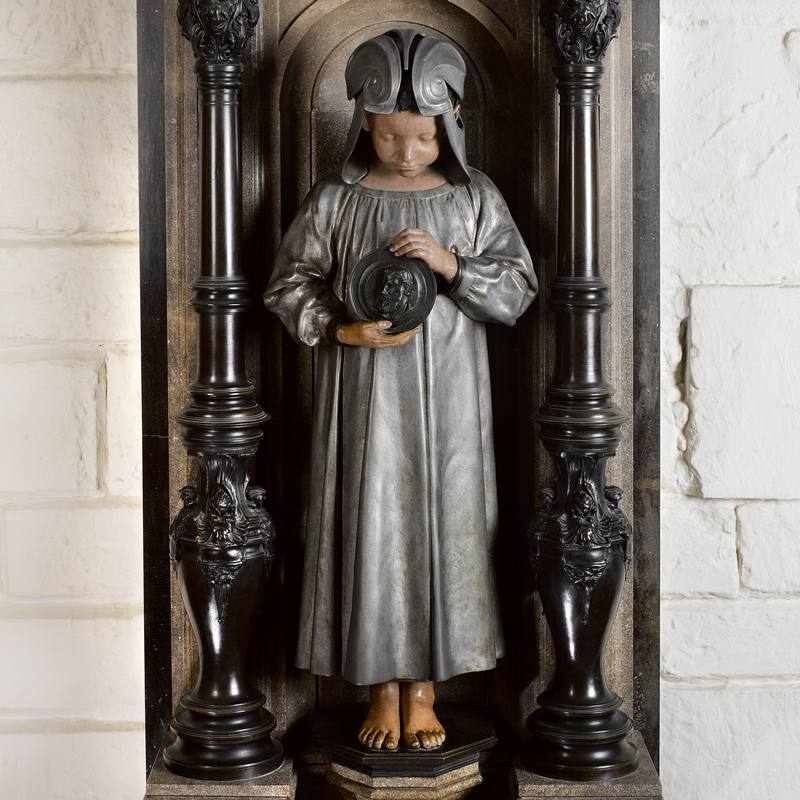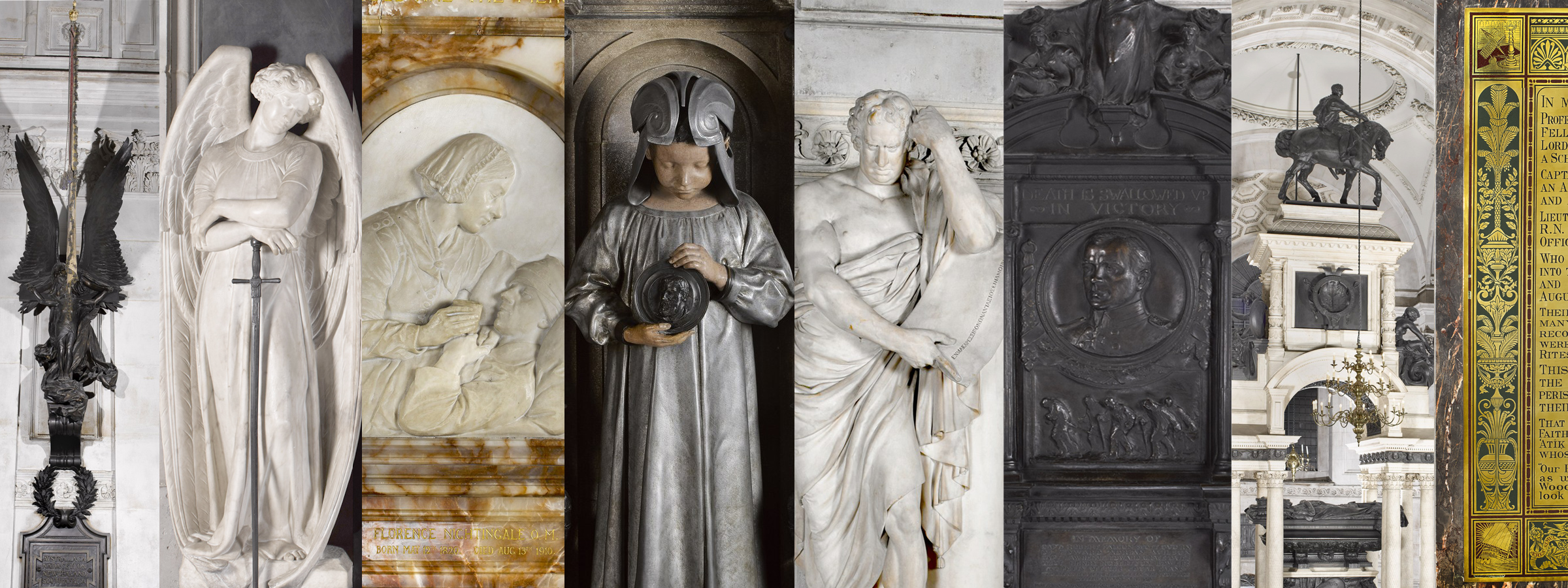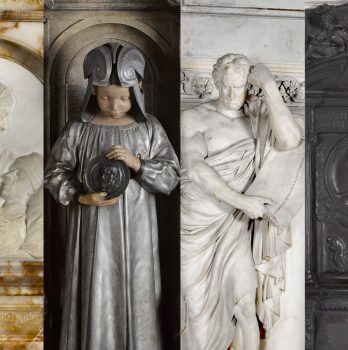‘A Very Special Birthday Card’: Marjorie Coughlan’s Response to the Monument to Randolph Caldecott (1846–1886) by Sir Alfred Gilbert, 1900


Transcript
‘A Very Special Birthday Card’ by Marjorie Coughlan
Randolph Caldecott was born in Chester on 22nd March 1846. After a few years as a bank clerk in Whitchurch and then in Manchester, he took the plunge and moved to London to pursue a career as an artist. The rest, as they say, is history, and although he died tragically young at the age of 39, his work lives on, especially through his picture books, which continue to delight new generations of children – and their parents. For Caldecott had that gift for conveying a scene, a moment, and depicting nuances of character, through insightful observation and gentle humour.
Caldecott was 26 when he arrived in London with £100 in his pocket: enough to keep him going for a year while he established himself. At some point in those early years, he joined a sketch club of which my great-great-grandfather, was also a member, I believe in some sort of administrative role – he was an economist and journalist, not an artist. In 1875, his daughter, my great-grandmother, Isabel received a birthday card from Caldecott that is very much in keeping with the little sketches that were always integral to his personal correspondence. It carries the date 23rd October and is inscribed, ‘To Miss Wilson on her Birthday’.
It shows a dark-haired little girl happily receiving the gift of a book marked ‘Volume VII’, from a genial, rather emaciated old Father Time. He has wings and the sometimes characteristic, curious little tuft of hair sticking up from his otherwise bald pate, and he hides his scythe behind his back in a gesture that is presumably meant to be reassuring but also carries the inevitable undercurrent of foreboding.
It is perhaps a curious picture to give to a seven-year-old. I’m not sure it would sell particularly well as a young child’s birthday card today. But Father Time figured much more prominently in children’s stories then than he does now, and it is perhaps only the adults viewing this drawing who feel the frisson of our mortality.
As well as the little drawing itself, for its own sake, I love everything about it – the layers of meaning with their gentle humour; the connection that it gives both to my great-grandmother and also to my Granny, who gave it to me; and the privilege and uniqueness of the connection with Caldecott.
In the decade after making this drawing, Caldecott produced the 16 ‘toy books’ that were to become a defining moment in children’s literature. Then in 1886, accompanied by his wife Marion, Caldecott embarked on a tour of America, partly because his work was so popular there, including his illustrations for Washington Irving’s Bracebridge Hall and Old Christmas; partly to seek out a warmer climate for his health. For he had suffered bad health nearly all his life. But Florida was unusually cold in February 1886 and Caldecott got sick and died, in the coastal town of St Augustine.
Caldecott’s death gave rise to a national outpouring of grief – he was someone who was universally loved, and the sense of loss was intensified by the thought of what might have been. His many friends raised the money for his memorial in St Paul’s Cathedral, by Sir Alfred Gilbert. His monument became one of the highlights for children visiting St Paul’s, as can be seen in a charming children’s book published in 1902: The Visit to London by F. D. Bedford and E. V. Lucas. And Caldecott’s name lives on in the Randolph Caldecott Medal, known simply as the Caldecott, awarded annually since 1938, the highest American award for a children’s book illustrator.
About Marjorie Coughlan
Dr Marjorie Coughlan works in the Department of History of Art, University of York and is the administrator for the Pantheons: Sculpture at St Paul’s Cathedral research project. Her research interests include book illustration, in particular children’s books from all over the world, up to the the present. For a number of years, she was associate editor then editor of PaperTigers.org, the first e-zine website to focus on multicultural children’s books. She is in the process of bringing the PaperTigers archive to her own website, Mirrors Windows Doors.
About the Monument
When the artist Randolph Caldecott died in America in 1886 shortly before his 40th birthday, tributes poured in from all areas of public life, not least the artistic community of which he had been a member for such a short though promising time. The combination of his illustrations for newspapers and magazines, such as the Graphic, and his immensely popular picture books for children, meant that there can have been hardly a literate household in the land that did not know his work. A committee was set up almost immediately to raise finds for a monument in St Paul’s Cathedral. Sir Alfred Gilbert (1854–1934) was given the commission and began work in 1887, but it was a time of increasing upheaval for the sculptor, who was taking on more work than he could cope with and contending with troubles of debt and his wife’s mental health. The monument was finally completed, however, and unveiled in 1900.


